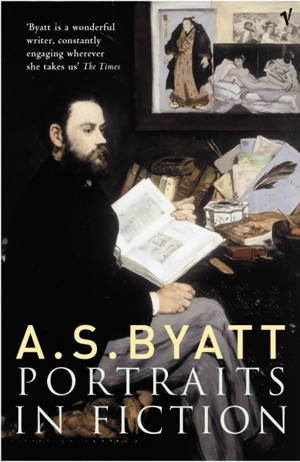
- Afhalen na 1 uur in een winkel met voorraad
- Gratis thuislevering in België vanaf € 30
- Ruim aanbod met 7 miljoen producten
- Afhalen na 1 uur in een winkel met voorraad
- Gratis thuislevering in België vanaf € 30
- Ruim aanbod met 7 miljoen producten
Zoeken
Omschrijving
Portraits seem the opposite of fiction, fixed in time and space, not running with the curve of a story or a life. Yet since the birth of the novel, writers have been fascinated by portraits as icons, as motifs, as images of character and evocations of past time. A. S. Byatt delves into the complex relations between portraits and characters, and between portraits and novels as whole works of art. Her authors range from Henry James to Iris Murdoch, her artists from Holbein to Botticelli, Manet to the present day. She looks at the way writers use portraits to conjure up the past, as in Ford Madox Ford's The Fifth Queen and Virginia Woolf's Orlando. She explores their erotic use, the idea of painting as a sexual act, full of danger. And she examines the creation of fictional portrait painters by writers like Balzac and Zola, whose writing was closely linked, in different ways to the art of Cézanne. A portrait can defy the process of age but its very stillness can also seem like death. Art can be a murderer. And sometimes, as in Salman Rushdie's The Moor's Last Sigh, a portrait can itself become the victim of Gothic rage.
Specificaties
Betrokkenen
- Auteur(s):
- Uitgeverij:
Inhoud
- Taal:
- Engels
Eigenschappen
- Productcode (EAN):
- 9781473520516
- Verschijningsdatum:
- 21/10/2018
- Uitvoering:
- E-book
- Beveiligd met:
- Adobe DRM
- Formaat:
- ePub

Alleen bij Standaard Boekhandel
+ 9 punten op je klantenkaart van Standaard Boekhandel
Beoordelingen
We publiceren alleen reviews die voldoen aan de voorwaarden voor reviews. Bekijk onze voorwaarden voor reviews.








